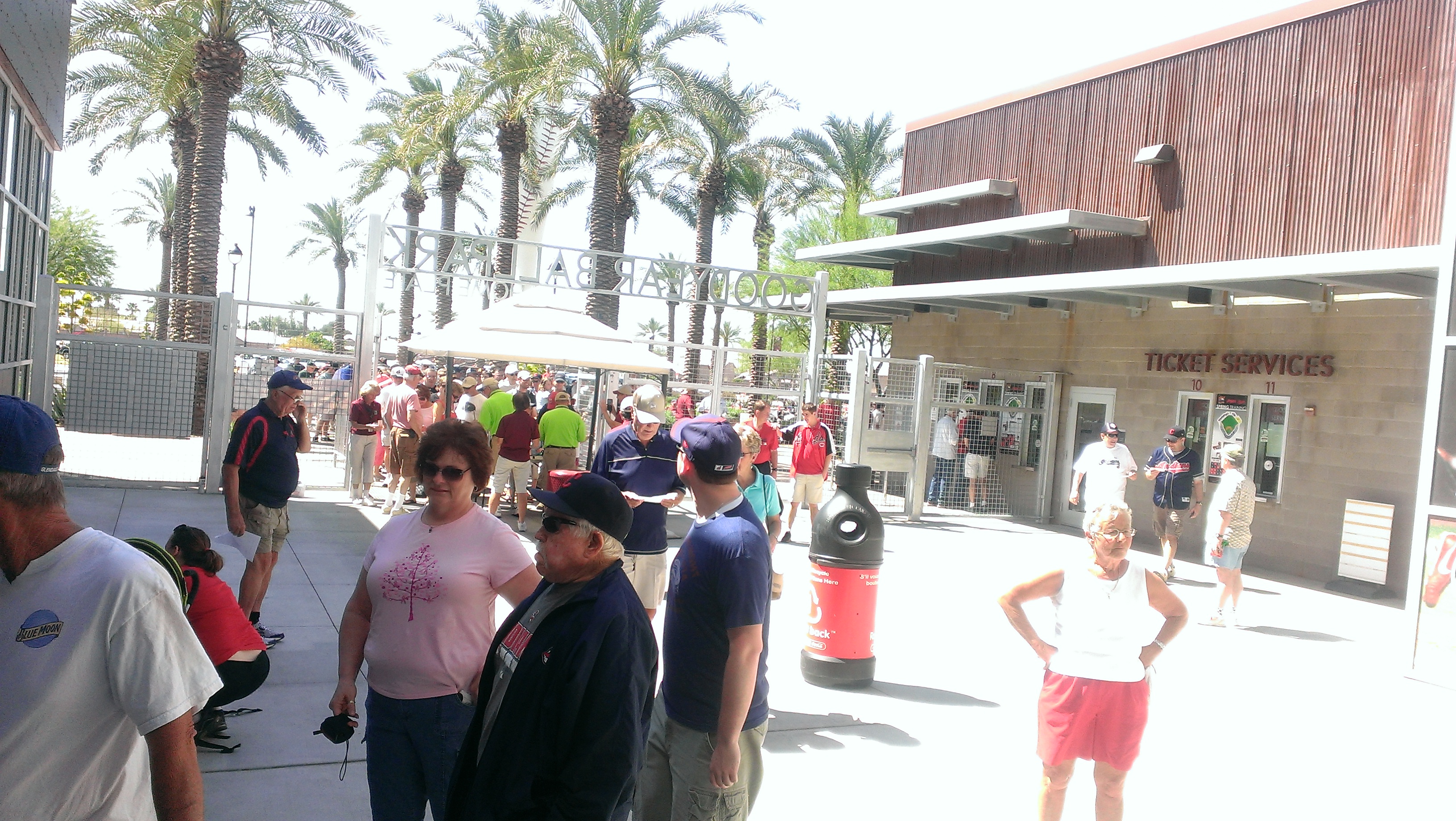Why, yes, thank you, we did have a great time last week overdosing on spring training baseball, squeezing in about five games in four days.
We went in search of “old fashion” spring training, which was a lot like town ball in its informality and ability of fans to get close to the game and the players and, for the most part, we found it.
But it’s also true that it’s disappearing. Baseball in Arizona is big business and you can see how cities, like their major league counterparts, are promising bigger things and building bigger facilities.
We found Salt River Fields, built on tribal land in Scottsdale, to be all it was cracked up to be: the most impressive spring training facility in all of baseball. It sells out its 11,000-seat stadium almost every game.

The stadium, as you can probably tell, offers no opportunity for players and fans to get together. It’s basically a small major league ballpark, surrounded by incredible facilities. One building houses more than a dozen batting cages, another features a half dozen or so small “home plates” just so catchers can practice catching balls in the dirt.
The tribal leaders lured the Colorado Rockies up from Tucson. Around the Cactus League, we found more examples of bigger and more impressive.
None of it was surprising. Baseball, of course, is changing and teams are wringing every last penny they can out of their operations.
And that fact is further driven home by the NPR story yesterday about how the Los Angeles Dodgers have started their own TV operation, and are holding up cable and satellite companies for big fees to carry the team’t TV games. So far, some of the providers aren’t biting, according to NPR. And like the Minnesota Twins before them, the Dodgers have removed all games from free TV.
In the end, the providers will pay because that’s just the way sports is right now.
And, of course, it’s not just baseball, as we’re seeing in the brewing debate in Minnesota over whether the state should allow big-money players to come to Minnesota and not have to pay taxes for playing in a Super Bowl here. In the end, Minnesota will probably grant all the tax breaks, again, because that’s just the way it is now. If the state wants a Super Bowl for the opportunity not to be flyover country for one day in the middle of winter, it’ll have to fork over the cash.
Arizona’s communities are probably making plenty of money by giving the team owners want they want. It’s hard to overestimate how much money the winter-weary northerners bring to the Phoenix area every spring for a month and a half, though it won’t offset the loss of jobs over in Goodyear, where we enjoyed the intimate surroundings of the stadium that was built for the Cleveland Indians and Cincinnati Reds.

But there hasn’t been much development in the area since we visited four years ago. And the big Lockheed Martin aerospace plant next door is shutting down soon; its jobs will scatter to Pennsylvania and Colorado.
Baseball can do a lot of great things for the soul. But for all of its ability to squeeze money in exchange for a perceived economic benefit, it’s never been able to replace a good job.
